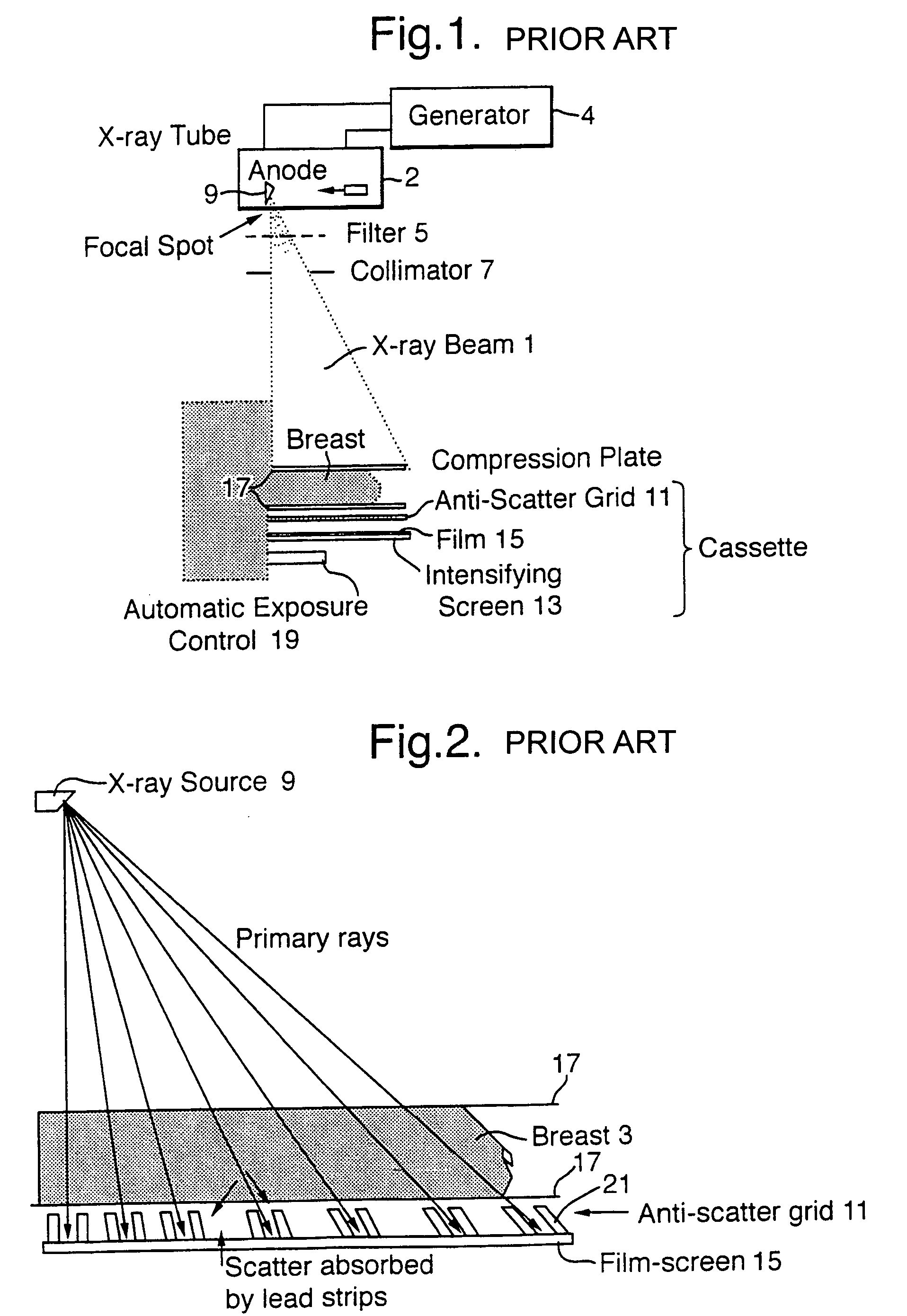X-ray image processing
a technology of x-ray images and x-ray images, applied in image enhancement, image analysis, instruments, etc., can solve the problems of poor signal-to-noise ratio, poor accuracy, mammographic images pose a tough challenge, etc., and achieve the effect of improving the accuracy of the hint representation and the calculation of the hint representation
- Summary
- Abstract
- Description
- Claims
- Application Information
AI Technical Summary
Benefits of technology
Problems solved by technology
Method used
Image
Examples
Embodiment Construction
[0085]An embodiment of the invention will now be described by going through the steps necessary to calculate the hint representation. These can be summarized as follows:[0086](1) Convert pixel value P(x, y) to film density D(x, y) using the digitiser calibration data;[0087](2) Remove digitiser blur;[0088](3) Convert film density D(x, y) to energy imparted to intensifying screen Eimppse(x, y) using film-screen calibration data;[0089](4) Compensate Eimppse(x, y) for intensifying screen glare;[0090](5) Compensate Eimppse(x, y) for the anode-heel effect and diverging x-ray beam;[0091](6) Estimate the thickness of the compressed breast;[0092](7) Estimate the scattered radiation Eimps(x, y);[0093](8) Estimate the extra-focal radiation Eimpe(x, y) components;[0094](9) Compute the measured primary energy Eimpp:
Eimpp(x, y)=Eimppse(x, y)−Eimps(x, y)−Eimpe(x, y)[0095](10) Compare this measured primary energy with the theoretical primary energy calculated by equation (2) for different values of...
PUM
 Login to View More
Login to View More Abstract
Description
Claims
Application Information
 Login to View More
Login to View More - R&D
- Intellectual Property
- Life Sciences
- Materials
- Tech Scout
- Unparalleled Data Quality
- Higher Quality Content
- 60% Fewer Hallucinations
Browse by: Latest US Patents, China's latest patents, Technical Efficacy Thesaurus, Application Domain, Technology Topic, Popular Technical Reports.
© 2025 PatSnap. All rights reserved.Legal|Privacy policy|Modern Slavery Act Transparency Statement|Sitemap|About US| Contact US: help@patsnap.com



